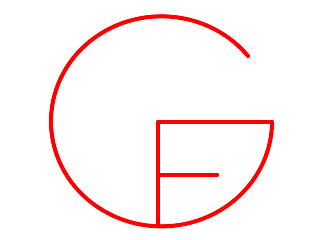
Grammatical Framework
Version 3.5
August 2013
News
What is GF
GF, Grammatical Framework, is a programming language for
multilingual grammar applications. It is
- a special-purpose language for grammars, like
YACC,
Bison,
Happy,
BNFC,
but not restricted to programming languages
- a functional programming language, like
Haskell,
Lisp,
OCaml,
SML,
Scheme,
but specialized to grammar writing
- a development platform for natural language grammars, like
LKB,
XLE,
Regulus,
but based on functional programming and type theory
- a categorial grammar formalism, like
ACG,
CCG,
but specialized for multilingual grammars,
- a logical framework, like
Agda,
Coq,
Isabelle,
but equipped with concrete syntax in addition to logic
- a platform for machine translation, like
Moses,
Apertium,
but based on deep structural analysis (and usually applied for
limited fragments of language).
Don't worry if you don't know most of the references above - but if you do know at
least one, it may help you to get a first idea of what GF is.
Applications
GF can be used for building
Availability
GF is open-source, licensed under GPL (the program) and
LGPL and BSD (the libraries). It
is available for
- Linux
- Mac OS X
- Windows
- Android mobile platform (via Java; runtime)
- via compilation to JavaScript, almost any platform that has a web browser (runtime)
Projects
GF was first created in 1998 at
Xerox Research Centre Europe,
Grenoble, in the project
Multilingual Document Authoring. At Xerox, it was used for prototypes including
a restaurant phrase book,
a database query system,
a formalization of an alarm system instructions with translations to 5 languages, and
an authoring system for medical drug descriptions.
Later projects using GF and involving third parties include, in chronological order,
- GF-Alfa:
natural language interface to formal proofs
- Efficient:
authoring tool for business models.
- GF-KeY:
authoring and translation of software specifications
- TALK:
multilingual and multimodal spoken dialogue systems
- WebALT:
multilingual generation of mathematical exercises (commercial project)
- SALDO:
Swedish morphological dictionary based on rules developed for GF and
Functional Morphology
- MOLTO:
multilingual online translation
- REMU:
reliable multilingual digital communication.
Here is a talk
about GF at XRCE,
14 years later.
Academically, GF has been used in at least ten PhD theses and resulted
in more than a hundred
scientific publications (see GF publication list).
Programming in GF
GF is easy to learn by following the tutorial.
You can write your first translator in 15 minutes.
GF has an interactive command interpreter, as well as a batch compiler.
Grammars can be compiled to parser and translator code in many different
formats. These components can then be embedded in applications written
in other programming languages. The formats currently supported are:
- Haskell
- Java, in particular the Android platform
- JavaScript
- Speech recognition: HTK/ATK, Nuance, JSGF
The GF programming language is high-level and advanced, featuring
- static type checking
- higher-order functions
- dependent types
- pattern matching with data constructors and regular expressions
- module system with multiple inheritance and parametrized modules
Getting help
If you need some help with GF, the first places to start are the Tutorial and Reference pages.
The printed book contains all the material in the tutorial and some extra bits, and is the recommended reference for GF.
We run the IRC channel #gf on the Freenode network, where you are welcome to look for help with small questions or just start a general discussion.
IRC logs (in raw format) are available here.
If you have a larger question which the community may benefit from, we recommend you ask it on the mailing list.
Libraries
Libraries are at the heart of modern software engineering. In natural language
applications, libraries are a way to cope with thousands of details involved in
syntax, lexicon, and inflection. The
GF resource grammar library has
support for an increasing number of languages, currently including
- Afrikaans
- Amharic (partial)
- Arabic (partial)
- Bulgarian
- Catalan
- Chinese
- Danish
- Dutch
- English
- Estonian
- Finnish
- French
- German
- Greek
- Hebrew (fragments)
- Hindi
- Interlingua
- Japanese
- Italian
- Latin (fragments)
- Latvian
- Maltese
- Nepali
- Norwegian bokmål
- Persian
- Polish
- Punjabi
- Romanian
- Russian
- Sindhi
- Spanish
- Swahili (fragments)
- Swedish
- Thai
- Turkish (fragments)
- Urdu
Adding a language to the resource library takes 3 to 9
months - contributions
are welcome! You can start with the resource grammarian's tutorial.
 ]
]

 ]
]
New!
]